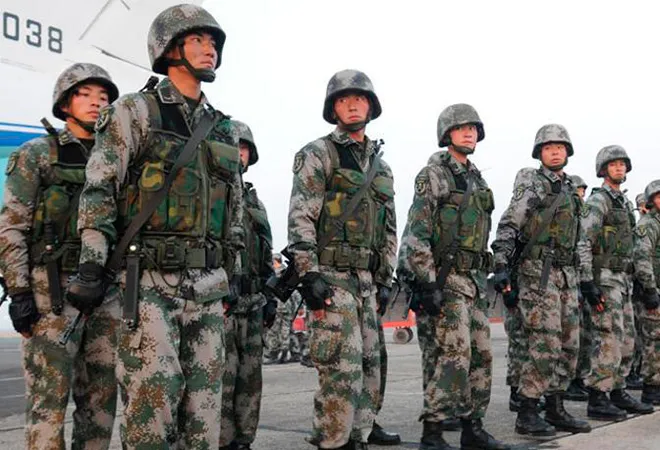The stalemate between the Indian and Chinese militaries at the Doklam plateau has gained renewed interest after it was reported that National Security Advisor (NSA) Ajit Doval may be travelling to Beijing later this month.
The NSA will be meeting his counterparts from the BRICS countries on 27 and 28 July, and will be hosted by Yang Jiechi, the Chinese State Councillor. Both serve as special representatives nominated by their governments to discuss border issues.
While any comprehensive dialogue on the Doklam standoff is unlikely, it is clear that the dispute will weigh heavy on Doval’s mind who is widely considered a China hawk.
The two officials last met in November and had agreed to hold the 20th round of talks on the border question in 2017. It is unlikely, however, that Doval and Yang can come to any fruitful conclusion given that this is a tri-state dispute and Bhutan, a central actor in the conflict, will be absent from the gathering.
While India can and has provided security assistance to Bhutan, it may be imprudent for Indian officials to negotiate border disputes on behalf of Bhutan.
This, however, is not the only factor delaying the resolution of the Doklam standoff. Chinese claims over the territory are reliant on a 130-year-old treaty that is quickly being recognised as a result of poor survey work. It is, therefore, unlikely that any geographical resolution will be forthcoming.
This is not to say, however, that India has no dog in the race. As multiple commentators have pointed out, the Doklam Triborder region is of immense strategic importance for India, given its proximity to the narrow Siliguri corridor.
Often dubbed “Chicken’s Neck” the Corridor is India’s lifeline to its north eastern states. The possibility of an enemy state foraying into and choking the corridor (thus denying access to the north east) is a constant source of nightmares for New Delhi’s strategic thinkers.
All of these reasons combined, elevate the Doklam controversy to more than just a border issue. While many have tried to draw parallels with other historical events and the Chinese have gone so far as to run a full-page editorial reminding India of its defeat in 1962, pragmatic lessons can perhaps be found in poker.
Spurred on by visions of being a great power, China has been consistently raising the stakes not just in the unfolding conflict but in its militarisation of islands in the South China Sea.
The Indian government for its part, encouraged by the Modi administration’s popular mandate, has begun playing it cool, matching China’s raises while continuing to hold its cards to its chest. This is unlikely to change with Doval’s visit.
Doval’s approach — now famously referred to as the Doval Doctrine — places limited reliance on diplomacy only to the extent that India’s territorial interests are not compromised.
The NSA instead favours military approaches to acquire strategic objectives. Perhaps for the first time in a long time, India’s foreign policy posture seems aligned with the NSA’s strategic vision. If he does visit Beijing, one of two things could happen: first, the meetings do not steer from the agenda of BRICS cooperation and Doklam does not get discussed; or second, the Doklam issue comes up but no significant advances are made. In either case, the deadlock on the ground is likely to continue for the foreseeable future.
Even as India seems unwilling to rise to China’s taunts and instead meets its aggressor with steadfastness, Bhutan remains the wild card in the conflict.
As a small Himalayan nation of one million people, the country has already carved out a unique position for itself as the only state in the region that lacks formal diplomatic ties with China. Bhutan also remains the only other country in the region, apart from India, that has not signed on to China’s Belt and Road Initiative. As China continues to keep up the derisive diatribe, painting Bhutan as a country lacking sovereignty while acting as an Indian protectorate, the question that arises is — how long can Bhutan hold off?
If Bhutan relents to Chinese advances it must do so with the knowledge that it is opening the floodgates for Chinese expansion into its territory.
The Doklam plateau is one of the four contested regions between China and Bhutan, and one of relative insignificance. Yielding space now is only likely to intensify the PLA presence in these other regions.
As one commentator has pointed out, a prolonged conflict in the Himalayas does more reputational harm to Beijing than its less economically powerful neighbours.
For Thimpu, therefore, the most beneficial option is to go ‘all in’ and wait out the stalemate. New Delhi on the other hand, can check and wait for Beijing to make its move.
This commentary originally appeared in News18.
The views expressed above belong to the author(s). ORF research and analyses now available on Telegram! Click here to access our curated content — blogs, longforms and interviews.




 PREV
PREV


